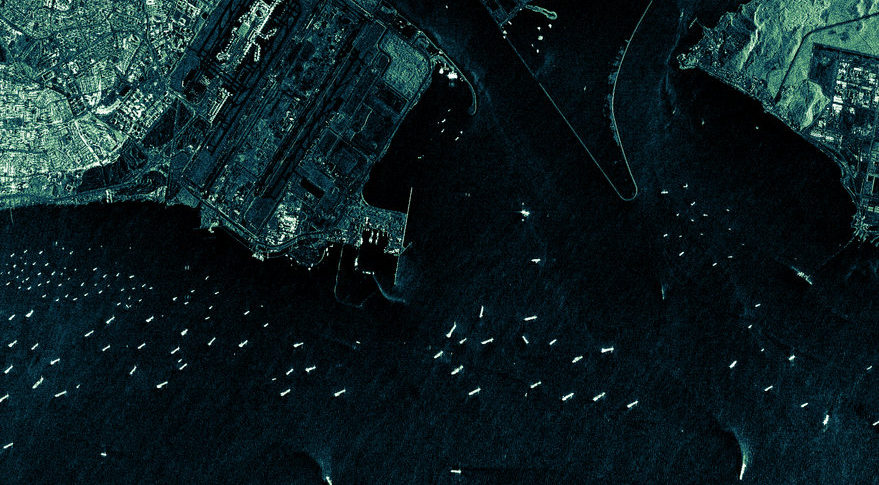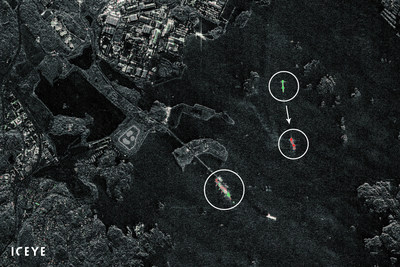Iceye released a product Jan. 20 to detect vessels at sea that have turned off their Automatic Identification System transponders.
The product is designed to help government agencies, nongovernmental organizations and commercial customers curb drug and human trafficking, find vessels fishing illegally and enforce rules against illegal transshipment of goods.
The image shows dark vessels near the Port of Singapore.
Credit Iceye
From SpaceNews by Debra Werner
Radar satellite operator Iceye released a product Jan. 20 to detect dark vessels, ships at sea that are not identifying themselves with Automatic Identification System (AIS) transponders.
Iceye combines observations from its constellation of three synthetic aperture radar satellites with other data sources to provide customers with radar satellite images of vessels that are not broadcasting their identification, position and course with AIS transponders.
The technology is designed to help government agencies, nongovernmental organizations and commercial customers curb drug and human trafficking, find illegal fishing vessels and enforce rules against illegal transshipment of goods, Finland-based Iceye said in a Jan. 20 news release.
Dark Vessel Detection solution can detect vessel location information and radar satellite images even when the AIS transponders are turned off
see interactive Demo
see interactive Demo
credit : Iceye
Dark vessel detection is a popular application for radar satellites which gather data day, night and in all weather conditions, Pekka Laurila, Iceye co-founder and chief strategy officer told SpaceNews. With three satellites in orbit, Iceye offers customers the ability to frequently revisit areas of interest. In addition, the company has developed machine learning algorithms to speed up dark vessel detection, he added.
In this composite visualization, vessels in the port of Gothenburg, Sweden, are detected changing their position with just minutes between two combined SAR satellite images.
Elements shown in green represent the position of elements only seen in the prior image, and elements in red represent elements only in the following image.
One of the vessels is leaving the port, and another is slowly approaching the oil terminal visible in the scene.
Not all vessels that have turned off their AIS transponders are conducting illegal activity.
There are more mundane reasons.
A vessel’s AIS transponder might not be working.
“The intent of a dark vessel detection product is to reduce the search space for customers,” Laurila said.
“They can focus on a few targets versus a very large number.”
Iceye is preparing to expand its constellation from three to five satellites, Laurila said.
Within weeks, Iceye plans to begin operating two additional satellites.
Then, the company will be able to respond more quickly to customers seeking imagery of specific targets and customers seeking frequent imagery updates, he added.
Iceye provides SAR imagery with a range of resolution and swath sizes, including SAR imagery with a resolution of less than one meter.
Links :
- TheFirstNews : Polish-Finnish firm creates pioneering, cloud-penetrating technology for camera-packing satellites
- Forbes : Hiding In High Ship Traffic: How One U.S. Company Tracks Vessels At Busiest Times / New Contract Aims To Increase Security On The High Seas
- GeoGarage blog : This radar image highlights the growth of the ... / Under 30 satellite companies Spire and ICEYE team up to ...



No comments:
Post a Comment